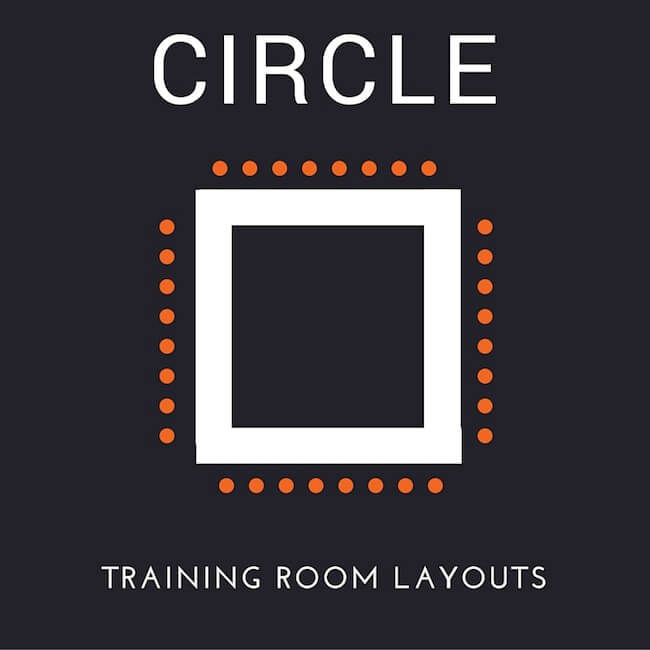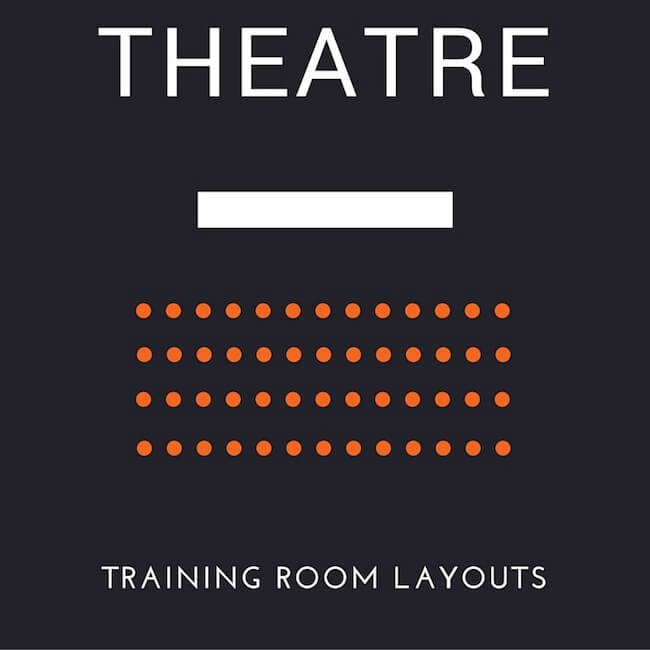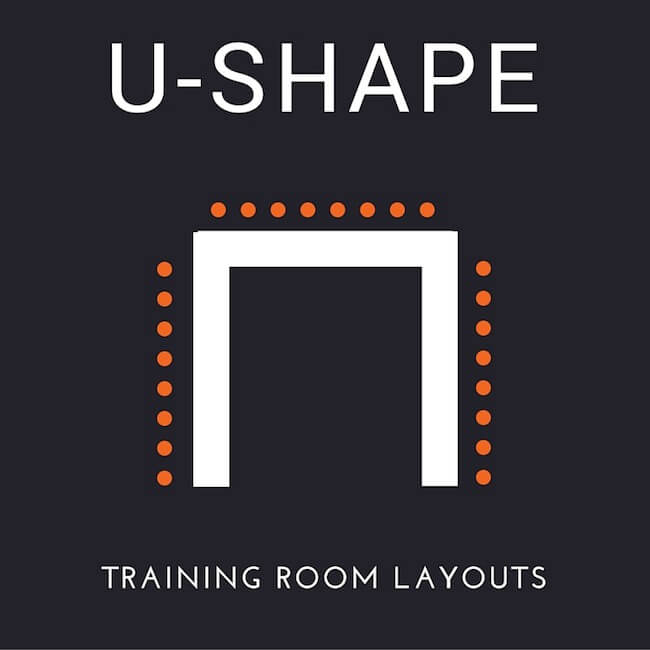How to Organise Training Events & Increase Engagement
Training is a great way to develop and enhance skills amongst employees. It also plays a vital role in engaging employees and building a more efficient work environment. It is even more important in today’s business world that self-managing employees can make decisions themselves.
As training supervisors you want to deliver the most effective training possible. This involves engaging a range of different learners and finding methods to support their learning. We reveal the secrets to organising a successful training event. This includes the best formats, effective training techniques and how to overcome issues that you may encounter.
How to organise a training event:
Click on the links below to jump to the relevant section:
Transitioning your training event online
THE BASICS
Why organise a training event?
When executed properly training can radically impact a business. This could be by improving customer service and conflict management to bringing teams closer together or facilitating independent decision-making.
There are a number of top line advantages of well-executed training events including:
Encourages performance monitoring
Enhances skills
Helps employees advance their career
Increases productivity
Improves motivation
Lowers employee turnover
Types of training events
There is a variety of training event types that can be used, including those that make use of e-learning and cloud technology. They include:
One to One
E-Learning – webinars; online resources
Continuing Professional Development (CPD)
Specialist skills delivery
HR & Management
PLANNING TRAINING EVENTS
Here we will help you develop a plan that meets the needs of the participants and aligns with the overall objectives of the organisation. You will need to tailor your training plan to each new client. With that in mind, it is hugely beneficial to involve stakeholders in the planning stages. They can provide valuable input into the training and help ensure that the topics and outcomes align.
There are also some practicalities that you will need to find out beforehand like how many people, the amount of time available and the budget.
Identifying and Setting Objectives
What is the overall purpose of the training? It could be that you have been tasked with delivering specific skill-based training or meeting more general team-building and engagement goals.
Whether you are meeting professional development requirements or have a looser brief, you need to align the training to the organisation’s objectives. These objectives will usually come from business leaders, although you may need to work with them to identify objectives.
As you plan your training you should tie every component back to these overall objectives. By having a clear learning focus and set of objectives, you improve your training. During the course of the training, you can refer back to the objectives when you deliver each section.
Know Your Audience
Once you have identified and set objectives, you then need to find out as much as you can about your audience. Who are the participants? What are their roles and key responsibilities? What level are they at? What previous training have they had? What are their needs? What are the potential issues you may face?
Having detailed information on participants and their needs will help you create an effective training plan. Whether they are managers, senior employees, direct reports, new staff or a mixed group makes a big difference to how you deliver your training.
Speaking to a small number of participants prior to the event can provide insight into their needs and valuable feedback into your training plan. You could get them to complete a short survey. The more relevant you can make the training, the more engaged you are likely to find the audience.
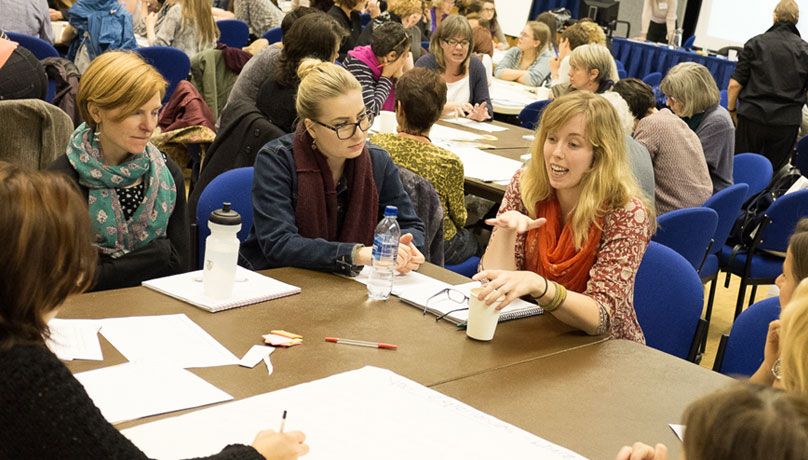
Large training seminar at 20 Bedford Way
Format of a Training Event
Start with the basics. You will need to answer the following questions based on your objectives and the participants attending:
– How many training topics?
– How many sessions?
– How many activities?
– What activities?
– What resources are required?
When planning a training schedule, you should give each section of your training as narrow a focus as possible and prioritise the most important information on the agenda. You should also schedule regular breaks to help maintain focus. You should also be aware of the post-lunch slump and schedule an activity that gets participants re-engaged and energised for the afternoon.
1. Set expectations before they arrive
It can really help to share an outline of the training event including the objectives prior to the first session. By knowing what to expect, participants will be prepared and ready to engage.
2. Relax People
The first thing you need to do on the day of the training is put people at ease. You need to kick things off with an activity or icebreaker that sparks interest and engagement. It should also help participants to feel comfortable and relaxed in the environment. Don’t rush this part as it is key to the overall success.
3. Learning
The learning aspect of the training will involve some presentation and teaching aspects, opportunities to explore key concepts alongside activities and practical elements. Activities are a great form of active learning and should be designed to help participants gain knowledge and practice skills. You can reinforce the training through discussion, role-playing, games and group work but more on this later.
Resources – It is beneficial to support your training with resources. Ideally these will be digital resources that participants can access and download at a later date.
4. Round-up
At the end of the session you should pull everything together and share key takeaways that summarise the central concepts and themes.
5. Evaluate
You should follow up once the training session is over with a short survey for participants. By identifying areas for improvement, you can help make your training sessions more effective in the future.
Setting Up the Training Room
How you plan and design your room is really important to maintaining engagement and ultimately achieving your objectives. Make sure you visit the training room space prior to the session and consider how you can get the most out of it.
Training Room Layouts
Room layouts should be matched to the format of the training session. Once you have your training plan, you should then look at how a room layout could enhance it.
Consider where you want the focus of attention to be for the majority of the day. Are activities going to occur in groups? If so, then try and lay out seats to make it easy for people to work together. If you are planning lots of role-playing and active learning you will need space to accommodate this.
Here are some common training room layouts and a summary of their suitability:
Cabaret Room Layout
Cabaret Style is good for larger numbers and group work. It encourages the mixing of participants and is easy for trainers to circulate. On the downside, it can offer poor visibility for some participants and with no clear focus can lead to inattention.
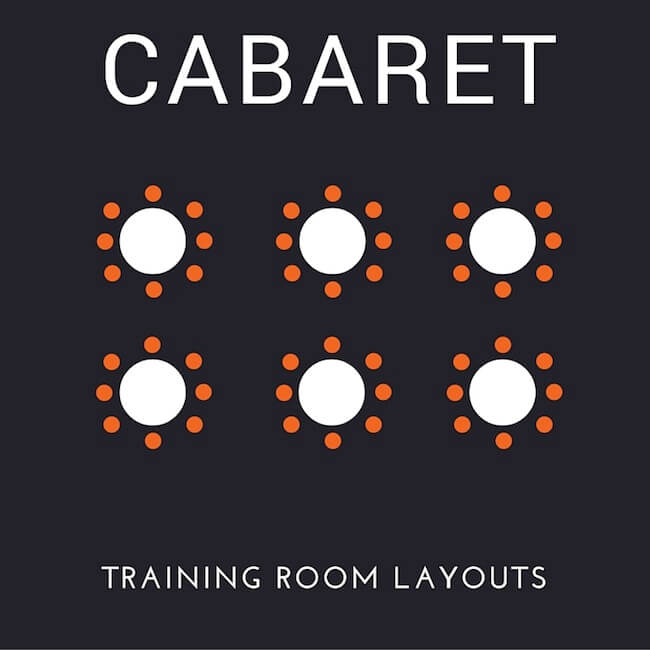
Circle / Square Room Layout
A circle or square layout is good for smaller groups and really good for interaction. It is not good for larger groups and when there is group work planned.
Herringbone Room Layout
The herringbone layout is good for all size groups and for small group work. It also allows the trainer to walk down the middle and to engage with participants. There can be issues with it seeming too much like school.
Theatre Room Layout
Visibility is good for all participants with theatre style venues and they can accommodate large numbers. Although ideal for presentations, it does mean that it is harder for the trainer to engage with participants. There would need to be additional space for group work.
U-Shape Room Layout
U-Shape is good for front on presentations while still allowing the trainer to interact with participants by walking into the U. It is also good for discussion. There can be issues with visibility and it seeming too formal.
How to make the most of your training space
At 20 Bedford Way our training spaces benefit from flexible room layouts and the latest a/v equipment, so you can create the environment that best suits your needs.
How to increase engagement in training
As a trainer one of your biggest challenge is to maintain engagement with all participants and create a positive learning experience. There are three levels of engagement:
Disengaged
Partly Engaged
Fully Engaged
You will want to develop training that meets everyone’s needs and means they are fully engaged throughout.
You will have a variety of people with varying degrees of knowledge and interest in the training as well as a range of personality types. Being aware of these different levels of engagement allows you to be monitor engagement and respond proactively when required.
Types of Learner
You can improve the efficacy of your training by being aware of the different ways people learn. There are four main types of learner that you may well encounter. By incorporating a range of methods in your training session, you can accommodate the majority of attendees and help them learn more effectively.
Kinesthetic Learners
These are the do-ers – individuals who need to physically perform an action. With kinesthetic learners, the focus needs to be on the physical and the practical. You should make sure there are opportunities to directly apply what they have learned with hands-on experiences.
Some form of role-playing or use of ‘real-life’ scenarios can be highly beneficial to make them grasp a concept or skill. If this is not possible, get them to imagine a real-life scenario and play out the scene in their heads.
Visual Learners
When it comes to visual learning, individuals learn best by seeing and observing things. You will want to support your training with a presentation and include diagrams, pictures and videos. The use of colours can also further aid knowledge retention. Handouts can help reinforce the key learnings or you can share your presentation using something like Slideshare so they can refer to it later.
Reading – Writing Learners
These people tend to learn best through reading and writing text. The written word is their preferred way to absorb information. They respond well to lists, benefit from reading materials and like to receive handouts. They will want to take notes. You can also get them to create written work to help them learn more effectively. Share a recommended reading list that could include relevant documents, case studies, articles and publications online for them to continue their study.
Auditory Learners
These learners like to hear information rather than read it or see it visually presented. With the emphasis on spoken word, it is important that you speak clearly and repeat key pieces of information. Group discussions and conversations are really important to auditory learners. Getting them to engage verbally will help reinforce key learnings. You should also ask them questions about the training topics. If you have the time and resources creating podcasts can be a great way to assist auditory learners or you can recommend some related podcasts.
Training Techniques
Things have moved on a long way from when training was based on formal presentations and lectures. Training sessions are now much more interactive and dynamic, utilising a range of different techniques to get people talking and engaged.
Ultimately, you need attendees to retain information and be able to apply it in their everyday working life. In order to make something more memorable, you need to get people involved.
Positivity
How you and the organisation frame the training can have a big impact on its overall success. It is vitally important to frame the training in positive terms and remove any association with the negative. This may require a change in the culture of how it is promoted, talked about and executed. You are there to deliver a positive activity that helps people progress, not bring people up to speed or correct errors. Training is all about being proactive and not passive and reactive. Once framed as a positive and proactive event, participants will want to engage.
Active Learning
One of the main shifts in training over the years is towards active learning where study is interactive and participation-based.
Group Activities – Group activities can get participants talking, help with team-building and inject some energy into a session. When organising group activities, it usually works best in smaller groups. You can either focus on role-play and simulation or training exercises. They can also help reinforce learnings. You can use mixed ability groups to encourage knowledge transfer with more knowledgeable team members sharing information. It is important to balance group work with some elements of independent study. Set individual tasks to reinforce key concepts acquired in group work.
Games – Games can be a good way to focus attention, increase engagement and make the training more enjoyable. Quizzes and memory games can be good at consolidating knowledge.
Challenge Trainees
It is important to set difficult activities for your trainees and challenge them where possible. Design activities that force them to use their initiative in order to find new solutions. Problem-solving and out-of-the-box thinking are two very valuable skills that can be developed in this way.
As well as developing skills, challenging tasks will also help with actual learning too. It’s important to allow mistakes to be made. By trying different approaches and finding out which methods work, participants learn more.
Keep it Short
Going on too long and overloading participants with information are sure-fire ways to lose engagement. With a day training event, you should keep sessions to around 45 minutes and schedule in plenty of short breaks. During these intervals make sure there are refreshments, opportunities to chat as well as space to go over notes.
Environment
The environment plays a big role in the event. Make sure you create a relaxing environment. A venue with plenty of natural light and fresh air (or air-conditioning) really help maintain engagement.
Storytelling
Bel Booker, the events journalist, believes in the power of story-telling in training events: “Tell stories or use metaphors. Whatever you’re teaching, try to make it relatable to everyday life by using real examples and case studies or even creative metaphors or parables.”
Technology
Technology can be used to improve engagement. Whether this is through making online resources available, interactive resources, ongoing discussion, or multi-faceted note taking apps like Notability.
BBC Radio
The Radio 4 series The Educators covers an array of topics. One that is particularly useful to trainers is http://www.bbc.co.uk/programmes/b06ry369.
It features a study that reveals the secrets of what makes a good teacher with plenty of techniques that you can develop yourself around engagement. You can download it as an MP3 – great for auditory learners!
Transitioning your training event online
With the coronavirus pandemic affecting most events in 2020, many training events have had to move online. And with the pandemic looking set to remain part of our lives for the foreseeable future, it’s likely businesses will need to rely on online formats for training and onboarding. Training is a key part of building business resilience in these times and ensuring that all team members are able to continue to work to the best of their ability.
While the online environment can challenge the traditional dynamic nature of training events, (as they tend to rely heavily on collaboration, interaction and human contact between trainers and attendees) the advance in online events over the last few years means that training events can still be as effective as in-person events.
Let’s explore some of the ways you can organise an online training event, while still using a lot of the suggestions from this article.
Organising Online Training Events
Use interactive video-conference software
There are lots of different video call software applications that can help you organise a seamless online training event. In our article about how to run a virtual event, we list some of the best programmes you can use.
When it comes to training events, the most important thing is that you choose a programme that is interactive. This means the software allows your attendees to talk out loud, share their screen, type questions, or indicate they have a question that they want to ask. Without this interactive element, it’s impossible to engage between the trainer and attendee, something we know is crucial for heightened learning.
Make your online training groups smaller
A downside of online training is that it can be more difficult to get people to speak and interact with the training. Large online groups can make interrupting and asking questions difficult, and the shyer attendees are likely to stay quieter, making the training less effective for them.
Much like the seating arrangements in an in-person training event, you need to consider how group size can affect a person’s ability to learn. By making groups much smaller, ideally up to five people, you’ll curate an online environment where you can talk to each attendee directly, give them ample opportunities to interact with you and make interjections far less intimidating.
Encourage questions
Without the natural cues that we have when interacting in person, it can be more difficult for learners to find the time to ask questions during an online training event. Even with smaller groups, the virtual element of the event can deter some people from engaging, out of fear of talking over someone or feeling vulnerable and on the spot.
As a trainer, you need to make sufficient time and space for people to ask questions. Provide a 10 minute Q&A session after every module, and encourage the learners to drop questions in the chat box in realtime. That way you can refer to the questions at the end of the module, and generate a more detailed conversation between you and the attendees.
Use online games to encourage learning
We’ve already explored how games are a great way to learn, and just because your event is online doesn’t mean your attendees have to miss out on the educational fun!
There are a whole range of online games available that can be played at a group level. You can adapt these to your learning objectives. For example:
- Quizzes (about the learning topic)
- Hangman (words, vocab you want to reinforce)
- Pictionary (use images that represent learnings you want to reinforce)
Embracing online training events
Online event formats are more mainstream than ever as social distancing measures remain firmly in place.
For online training events, it’s important to adapt early on in order to help people learn as best as possible during the pandemic period. By strategically incorporating the interactive elements of an in-person event, you can make sure your online training events are as successful as there in-person counterparts.
It’s important to note that the adaptation to online events across the board may even shape future training events, meaning they’re more likely to have online and in person attributes, even after the pandemic is over. So, for all future training events, embrace the functionalities of online events and plan your event with both an in-person and online format.
Why Choose 20 Bedford Way as your Training Venue?
20 Bedford Way is proud to offer 35 rooms and halls suitable for any size or type of training event right in the heart of London. Our Seminar Rooms are popular with trainers in London and beyond. All of our rooms benefit from:
– Good natural light
– Flexible layouts
– Professional presentation equipment
– Excellent value for money
Our event planners are on hand to help with the logistics of preparing the venue in which the training seminar takes place. We also serve a tasty range of working lunches or you can order picnic lunches and take advantage of Bloomsbury’s garden squares. An al fresco lunch is a great way to relax people and bring participants closer together.
We know that cost is a major concern when booking a training venue, but at 20 Bedford Way we are able to offer our blank canvas training rooms at very affordable rates. For more information call us on 020 7612 6143 or fill out our enquiry form.
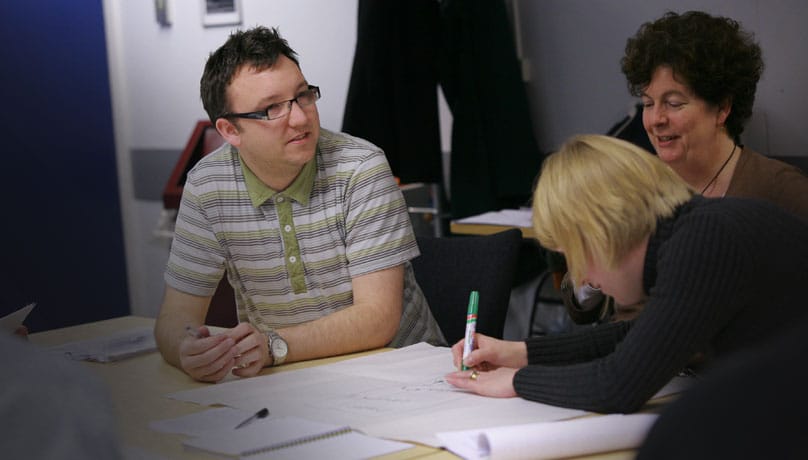
Training session at 20 Bedford Way
Related Content
How to Organise a Training Event from Archives.org
Planning Effective Training Seminars from Cite HR
Header image: Dr. Robert Goddard at Clark University via NASA on Flickr


